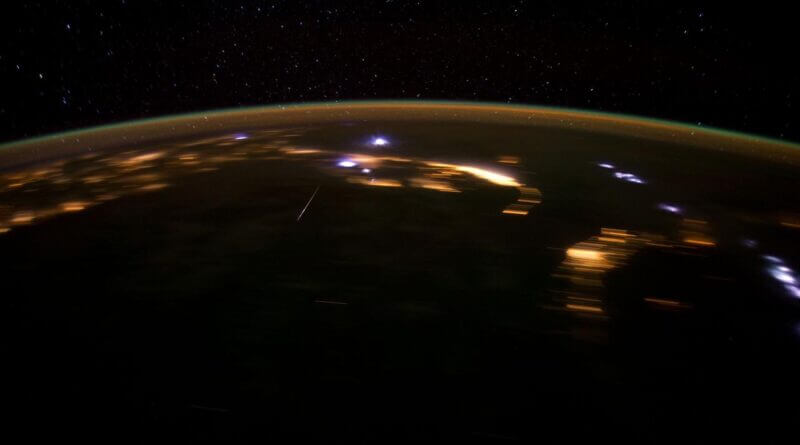Space Is The Place: The Night Sky Over Belper, April 2023
April’s Night Sky brings: Spring Meteor Showers; Venus is the most visible planet, blazing in the evening sky; Mars is in Gemini.
Spring Meteor Showers
Meteor showers are annual events occurring as the Earth moves through the debris left behind by comets and (sometimes) asteroids. Our last meteor shower was in early January (the Quadrantids). In April, the cycle starts again with the Lyrids and the Eta Aquarids and the background rate for meteors increases. However, patience will be needed if you go out meteor-watching, do not be too disappointed if no meteors are seen – there will be better opportunities later on in the year.
Lyrids Meteor Shower: 21st – 22nd April
The Lyrids pass through the debris left behind by Comet Thatcher – last seen in 1861 and not due another visit for another 258 years. Lyrids are classed as a moderate meteor shower and, at their peak, produce 18 meteors per hour.
This year the best observed rates for the meteor shower are predicted to be on the night of the 21st of April going into the 22nd.
Lyrids are fast moving and can leave glowing trails. You will need to stay out a long time to see one. They appear from all parts of the sky, so just look up to see them.
Image above, courtesy of NASA: A Lyrid Meteor over the gulf of Mexico, image taken from the ISS.
Eta Aquarids Meteor Shower: 19th April – 26th of May
The Eta Aquarids become active around the 19th of April, reaching their maximum on the nights around the 5th / 6th of May. They may produce a few visible meteors during that time.
The Moon
23rd of April: Early Evening: the Crescent Moon appears to be close to Venus
25th of April: A crescent Moon appears to be close to Mars
The Planets
Venus blazes away in the evening sky, very impressive atm. It shines in the west: bright and unmistakable and makes a nice pairing with the crescent Moon on the 23rd of April.
Mars can be seen in the constellation of Gemini, where it makes a nice contrast with the stars, Castor and Pollux.
The International Space Station
`
The International Space Station is one of the brightest objects in the night sky. It is not hard to spot and flies-past periodically throughout the year. Fly-pasts tend to swing from PM to AM. Typically ISS will be in the sky for up to four minutes at a time. It moves slowly across the sky, at first bright and then fading as it moves over the horizon.
As of the 6th of April, no sightings reported so best to check NASA’s Spot the Station site for possible sightings later on in April. You may also want to sign up to the Alerts Site – which gives advance warning of the most prominent sightings.

